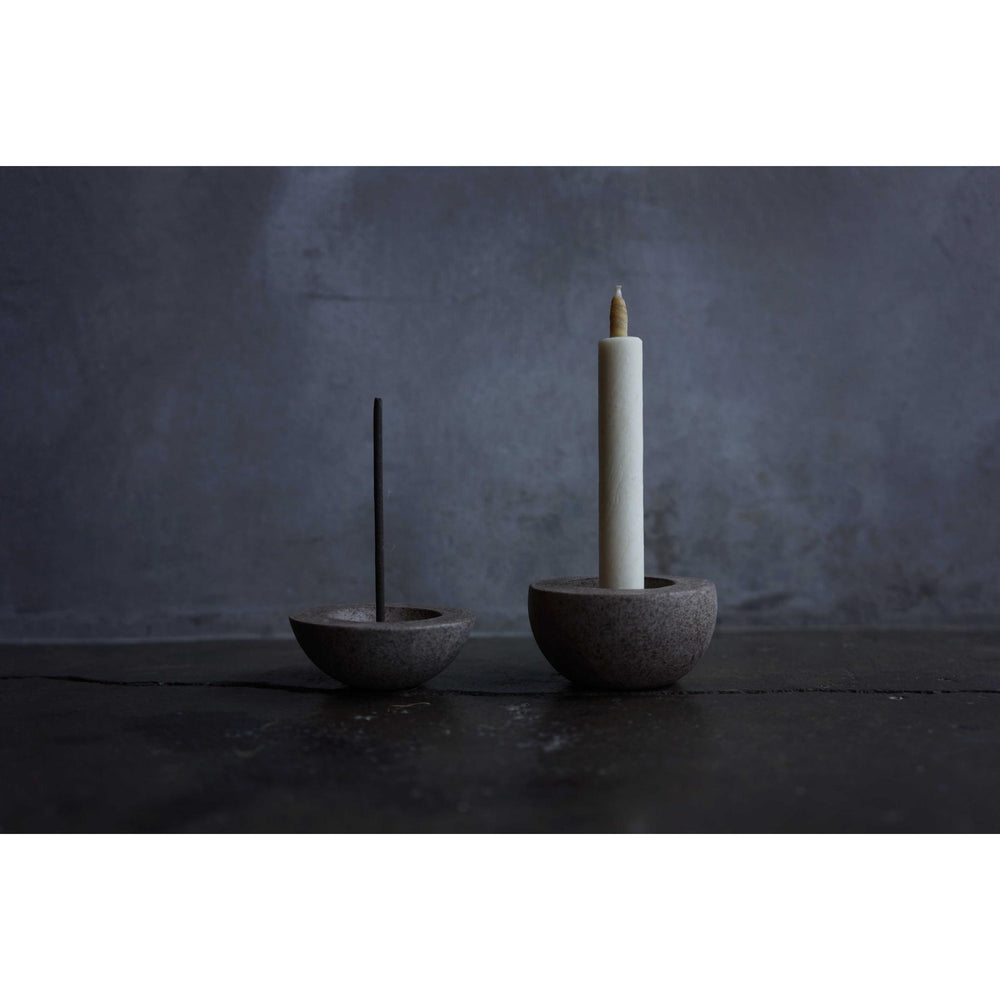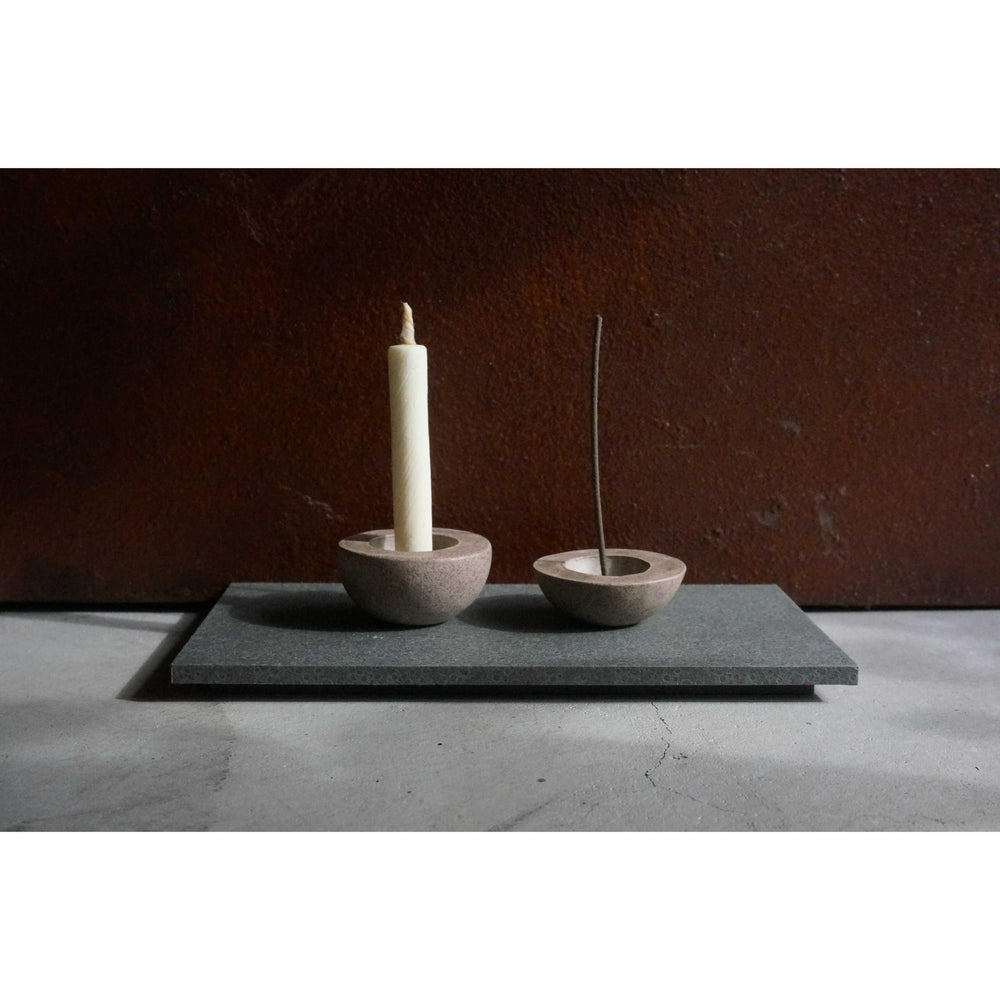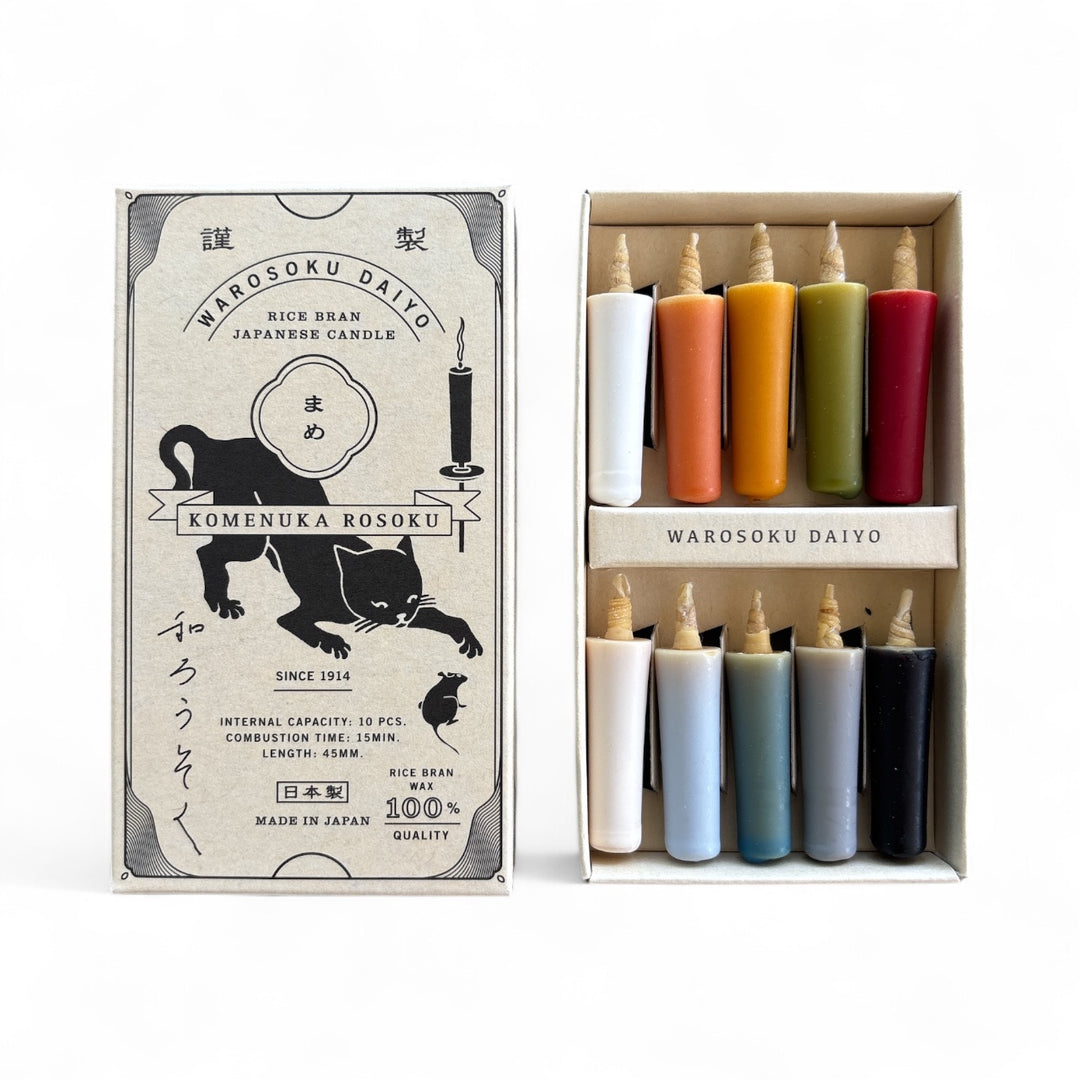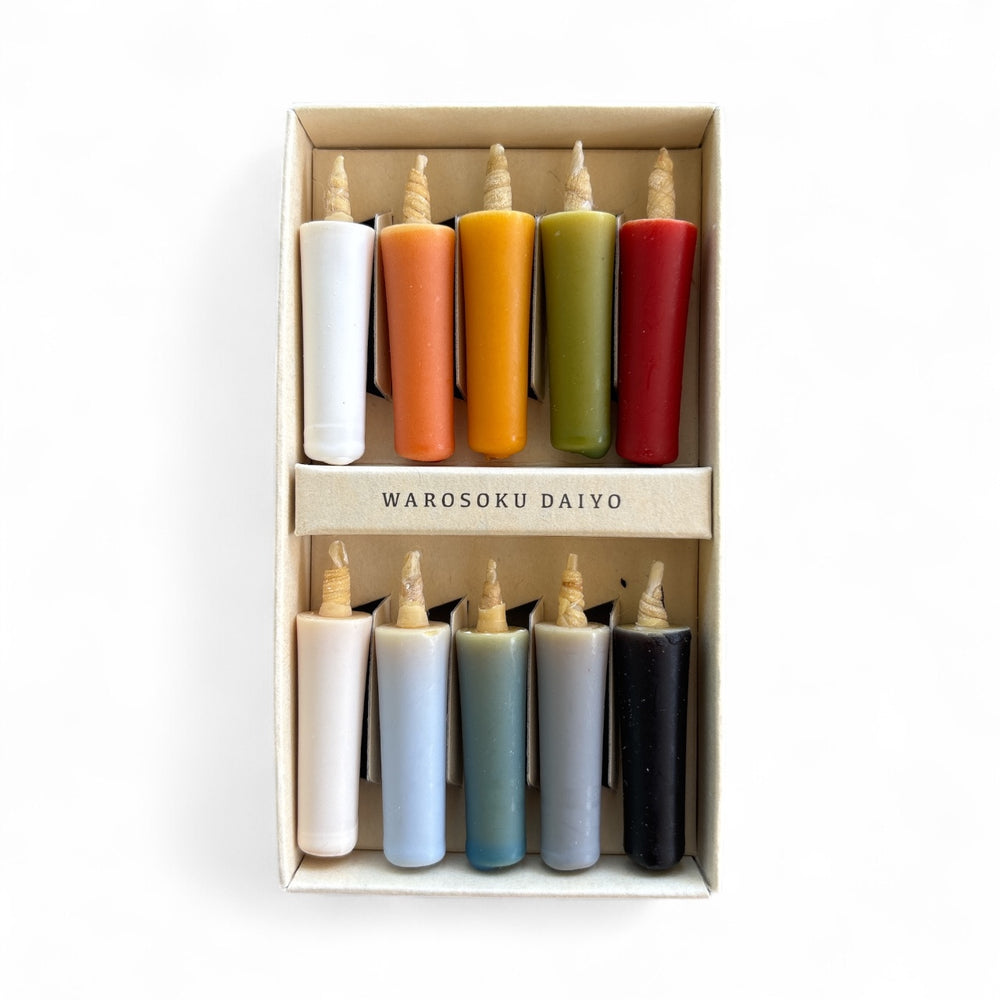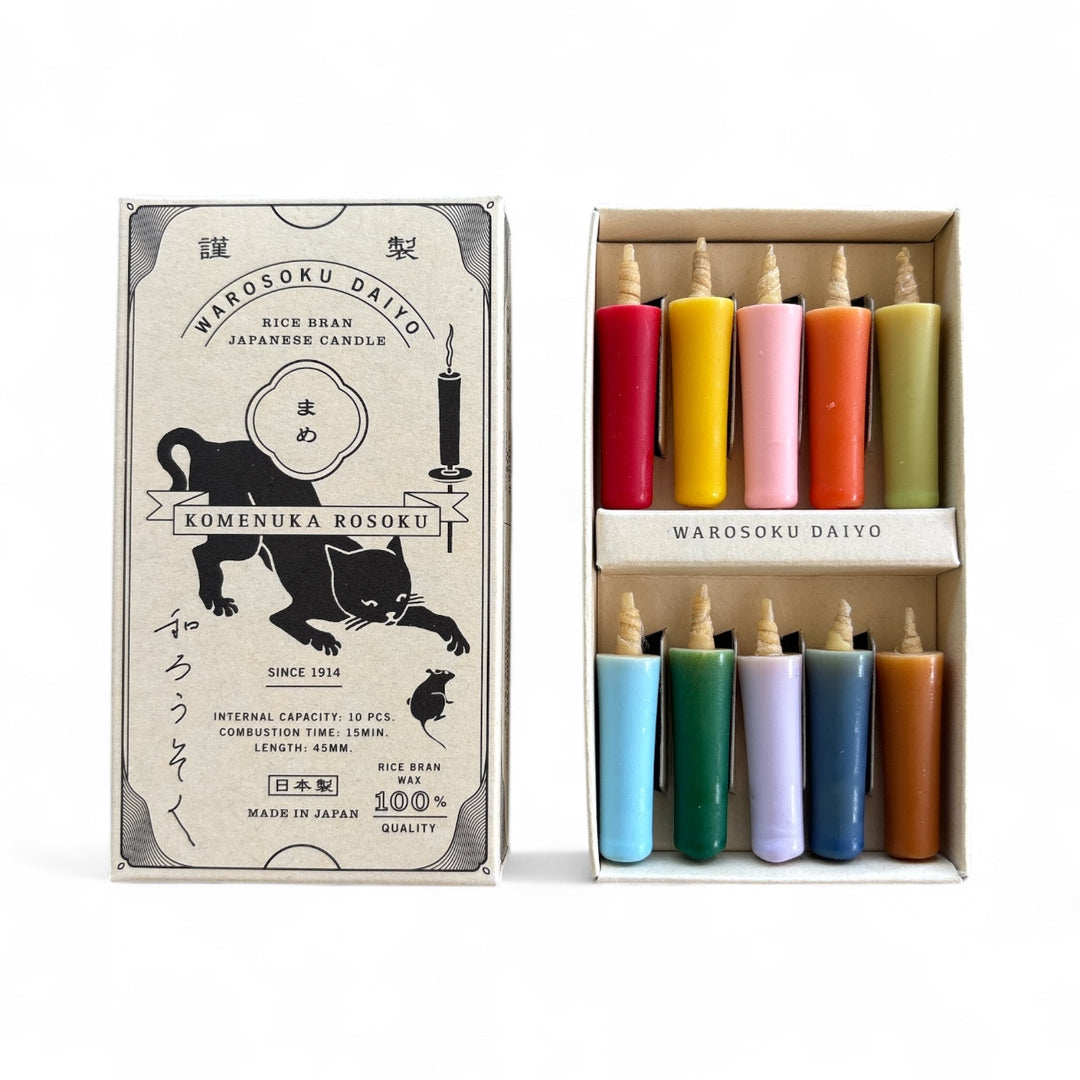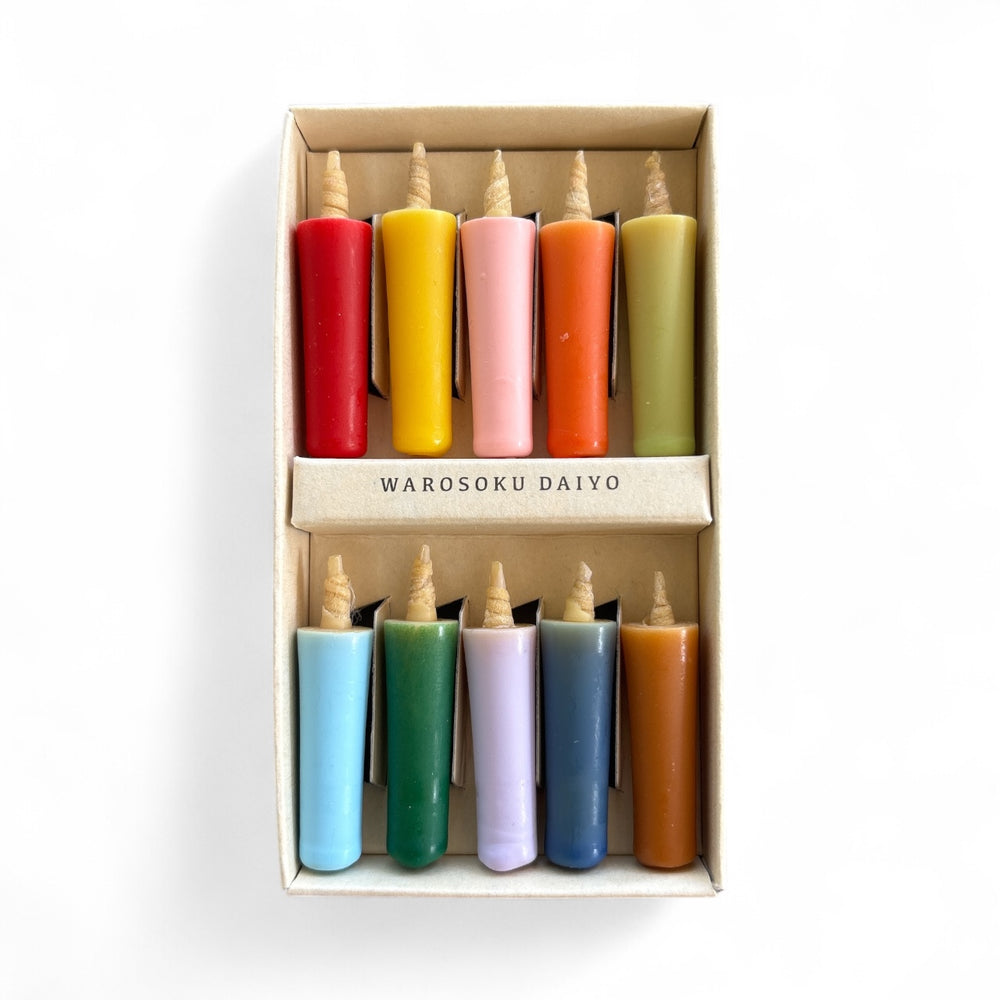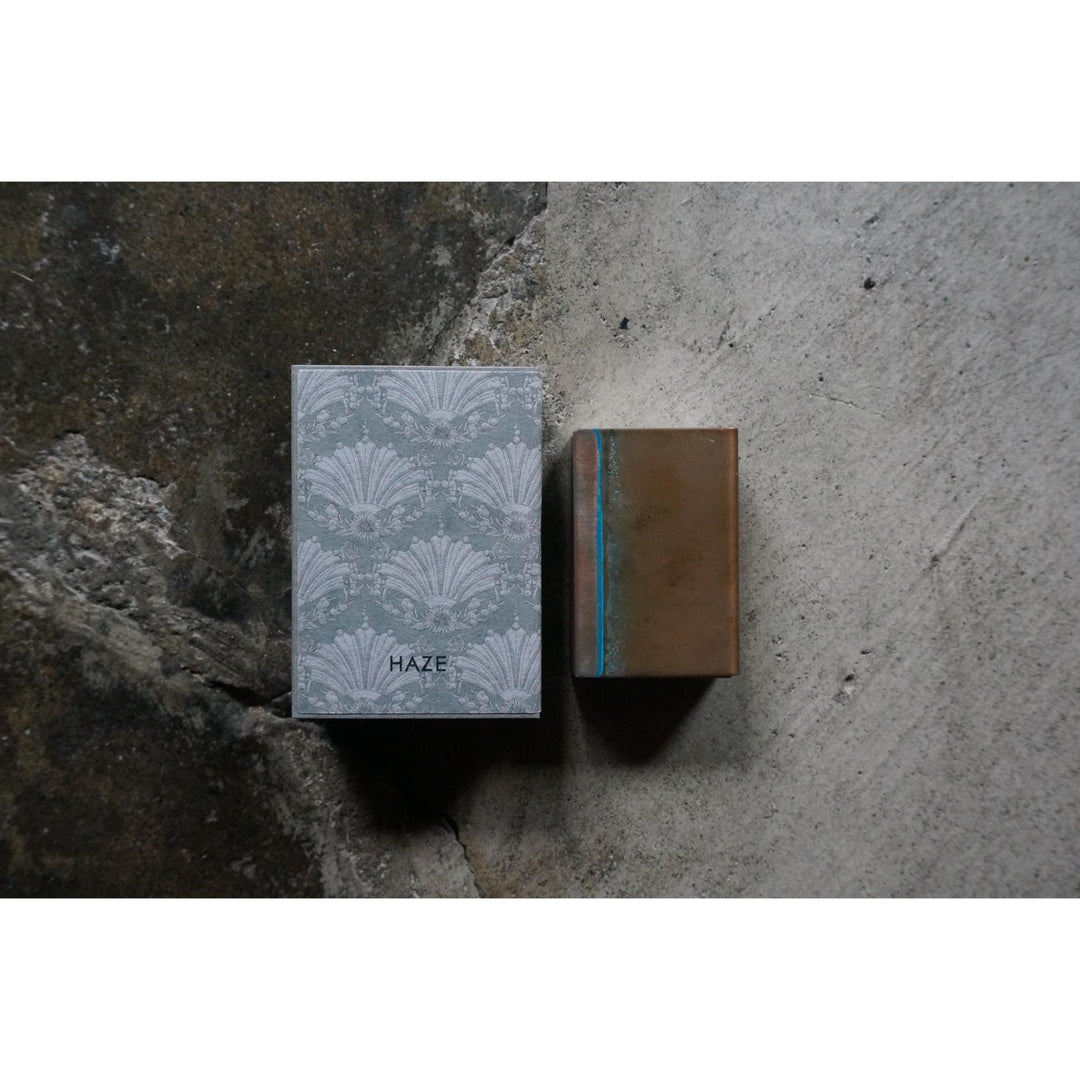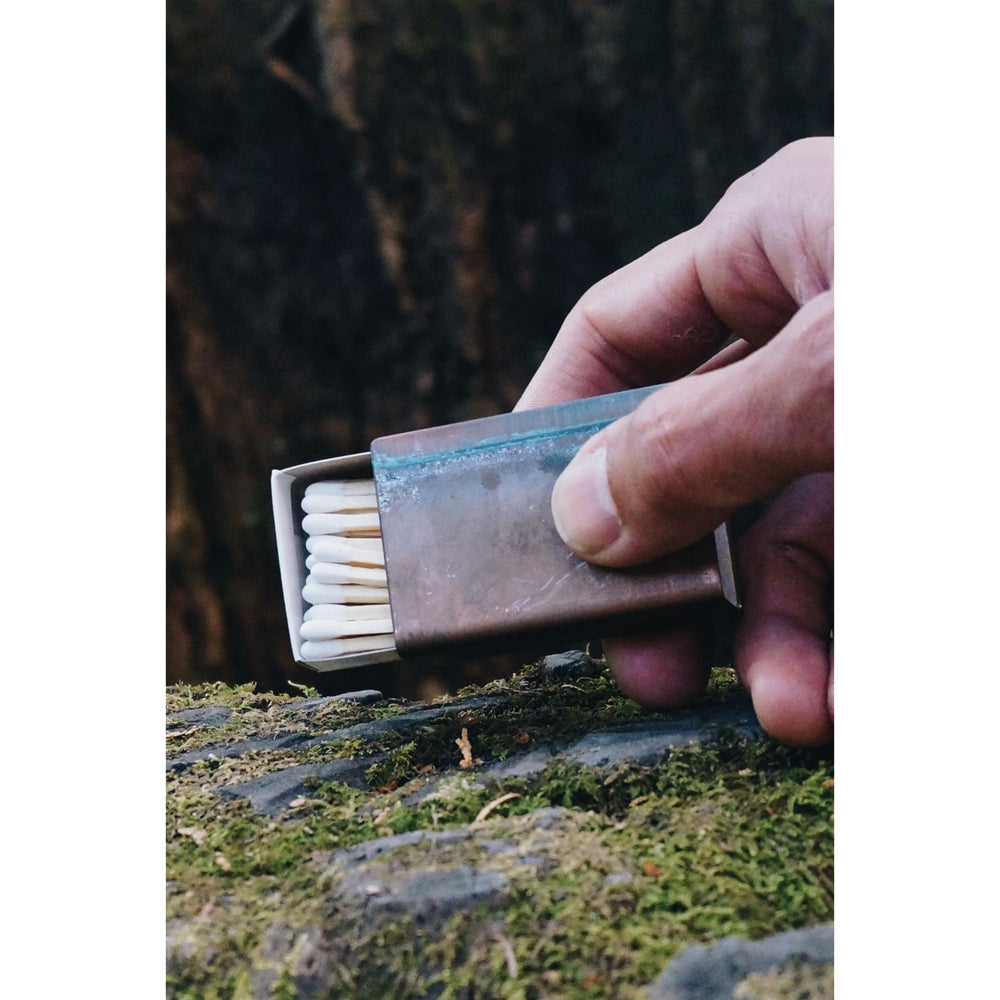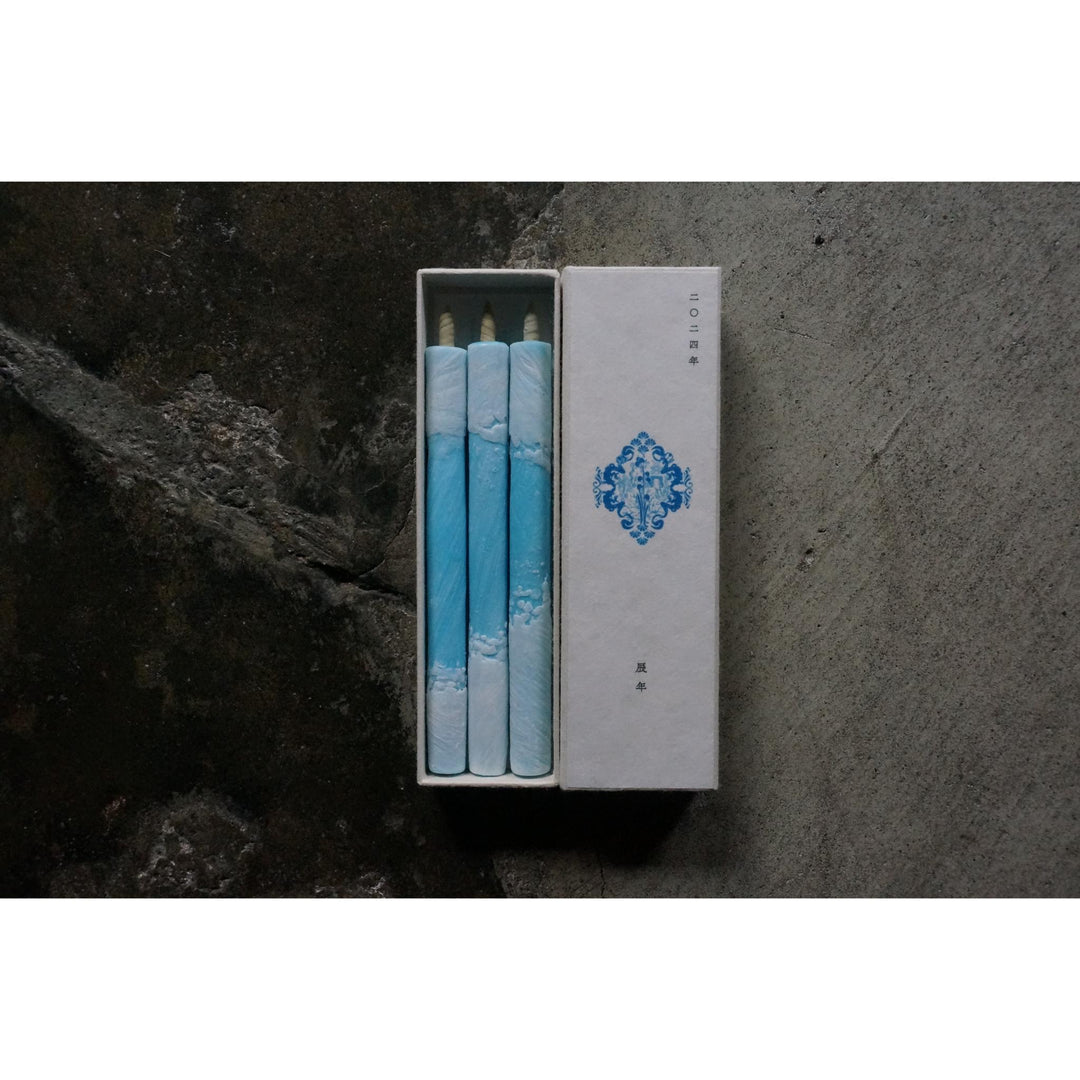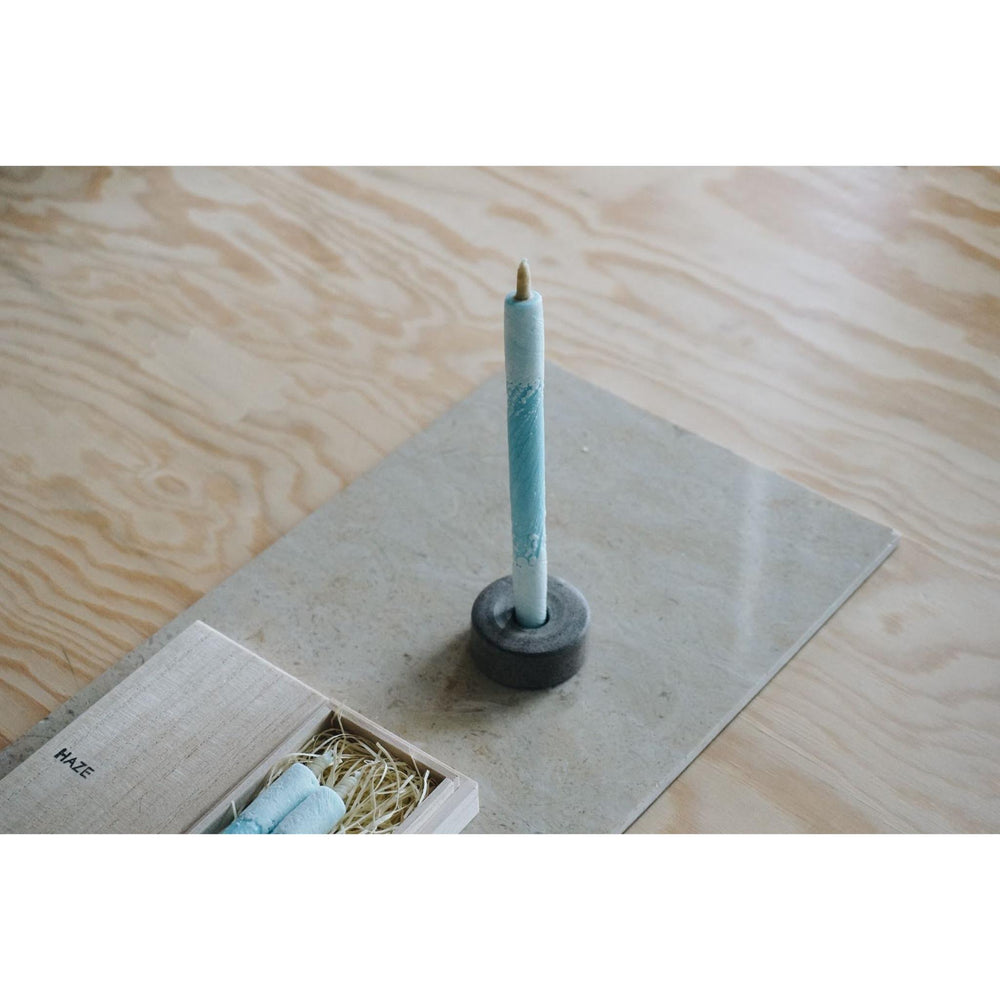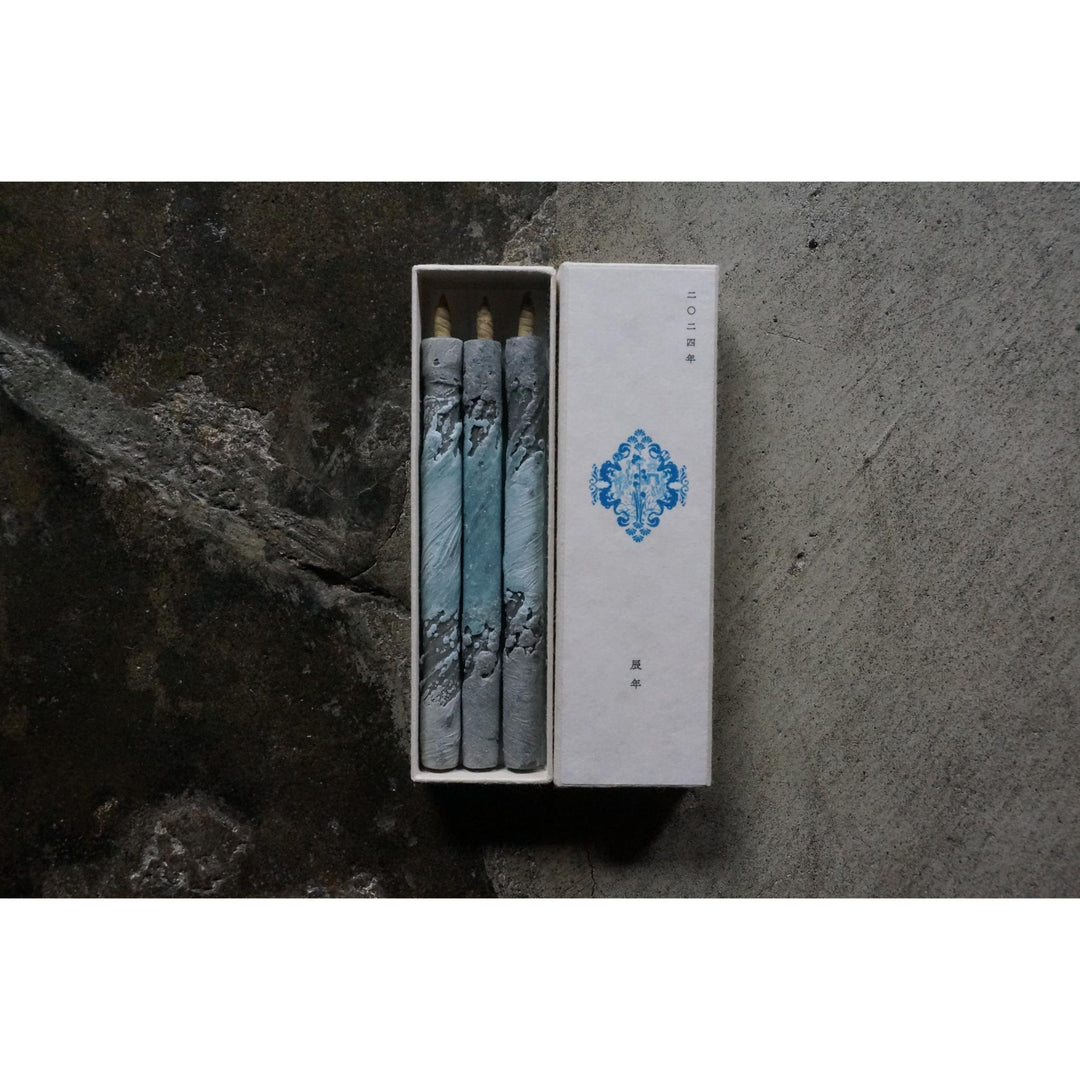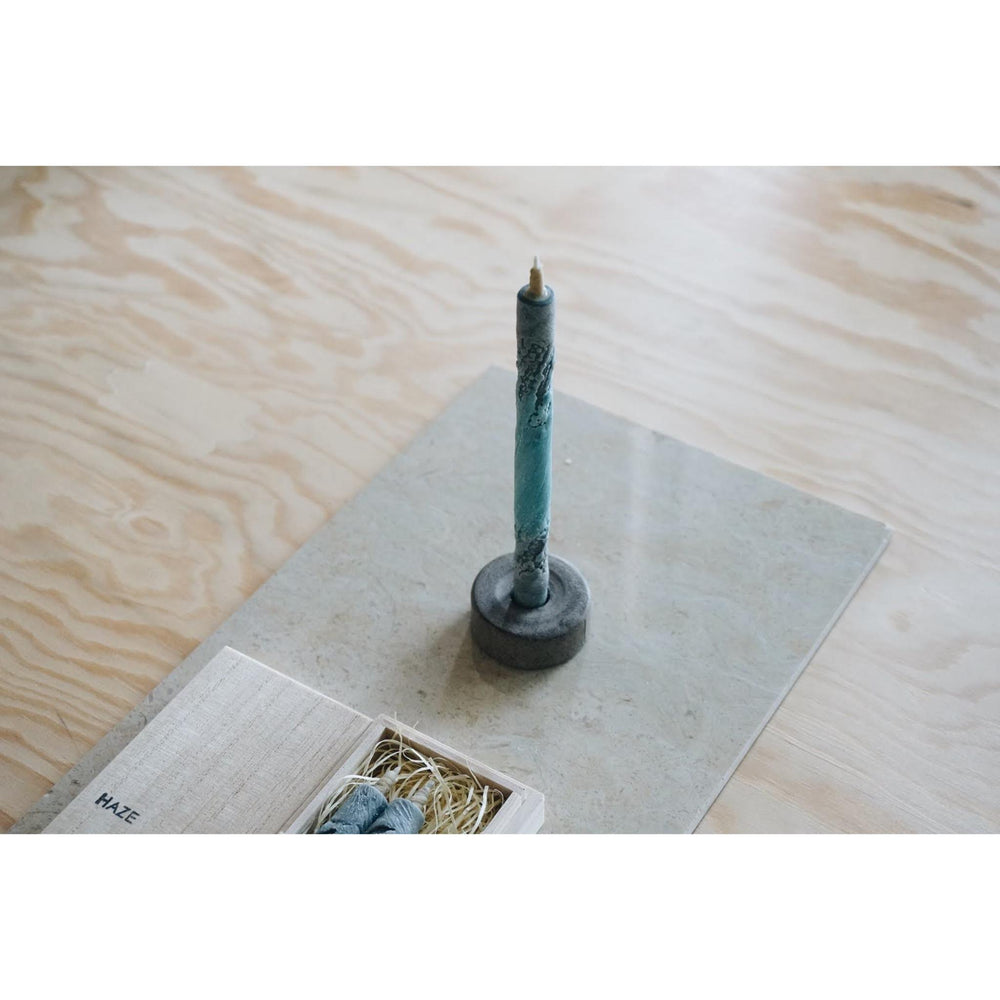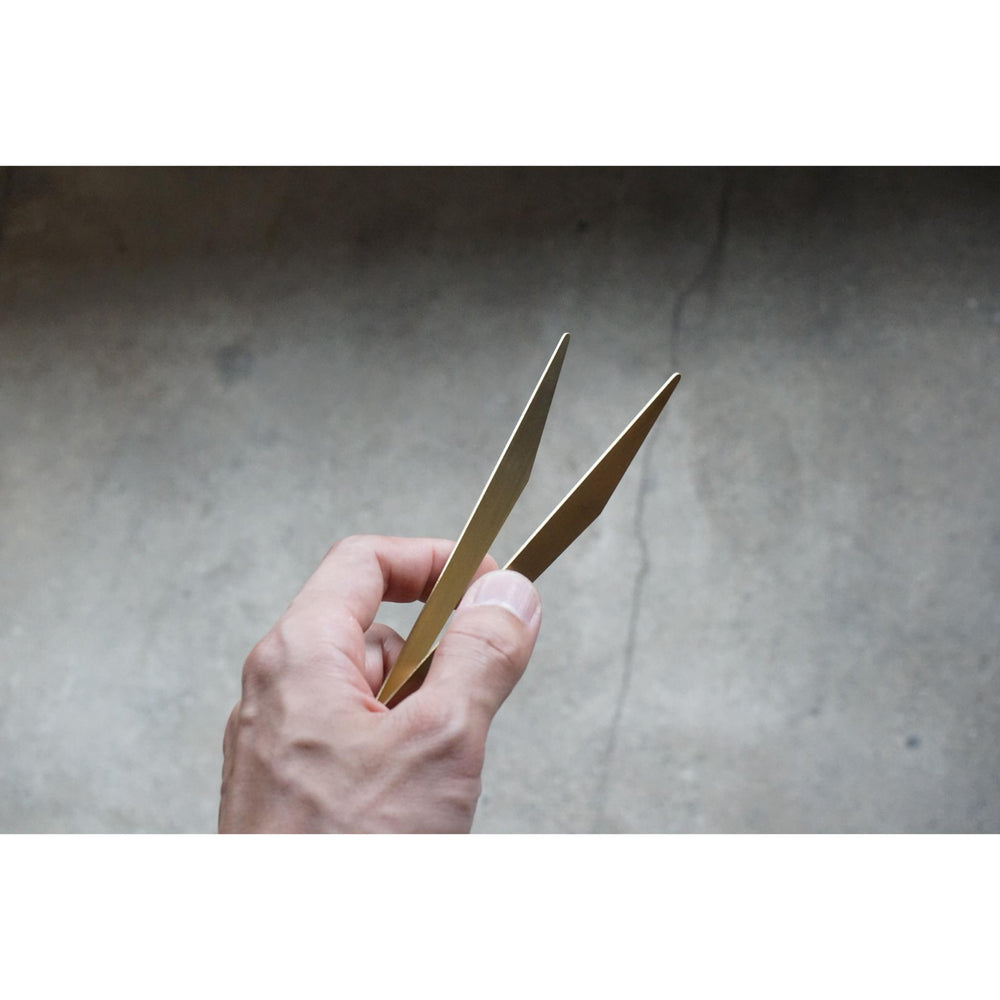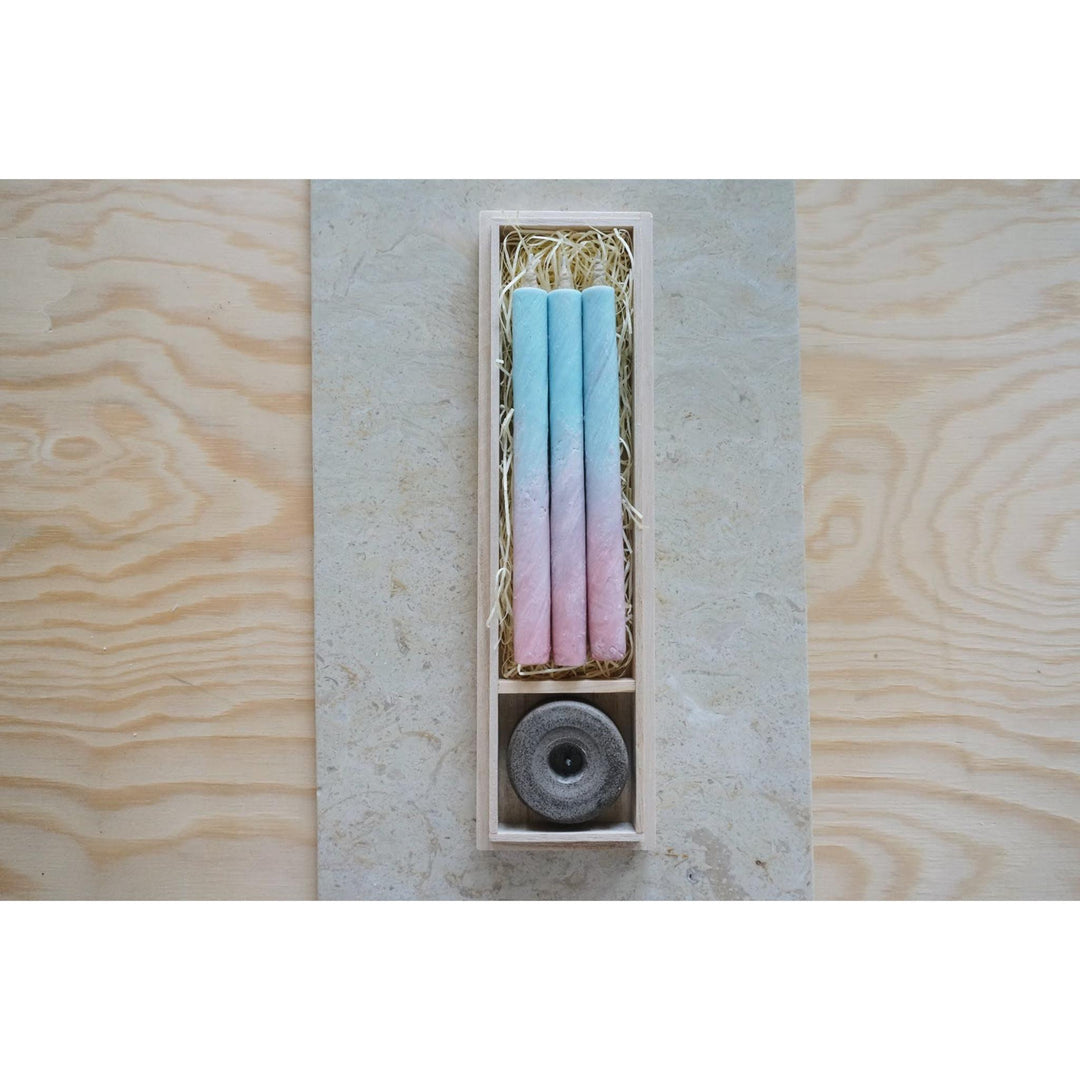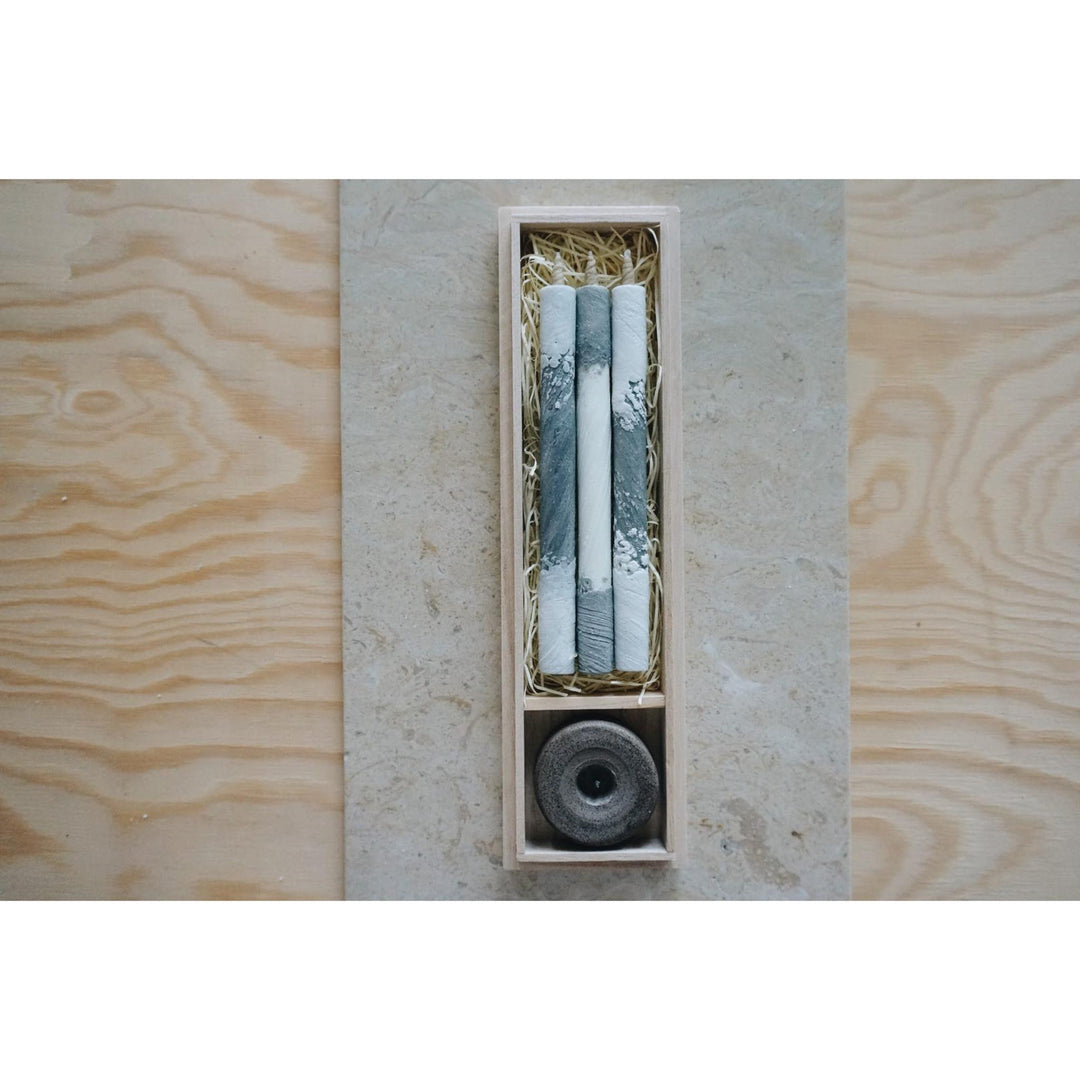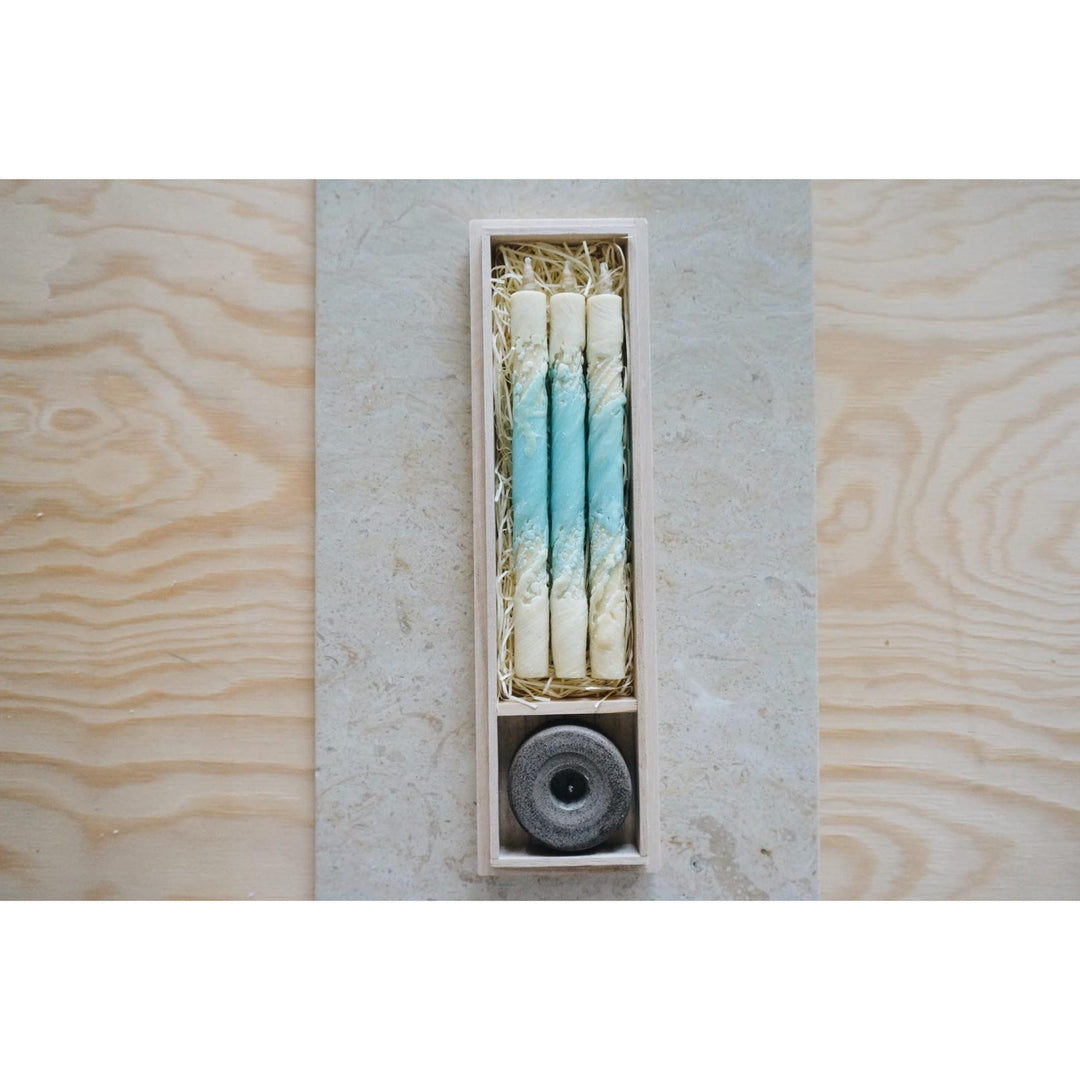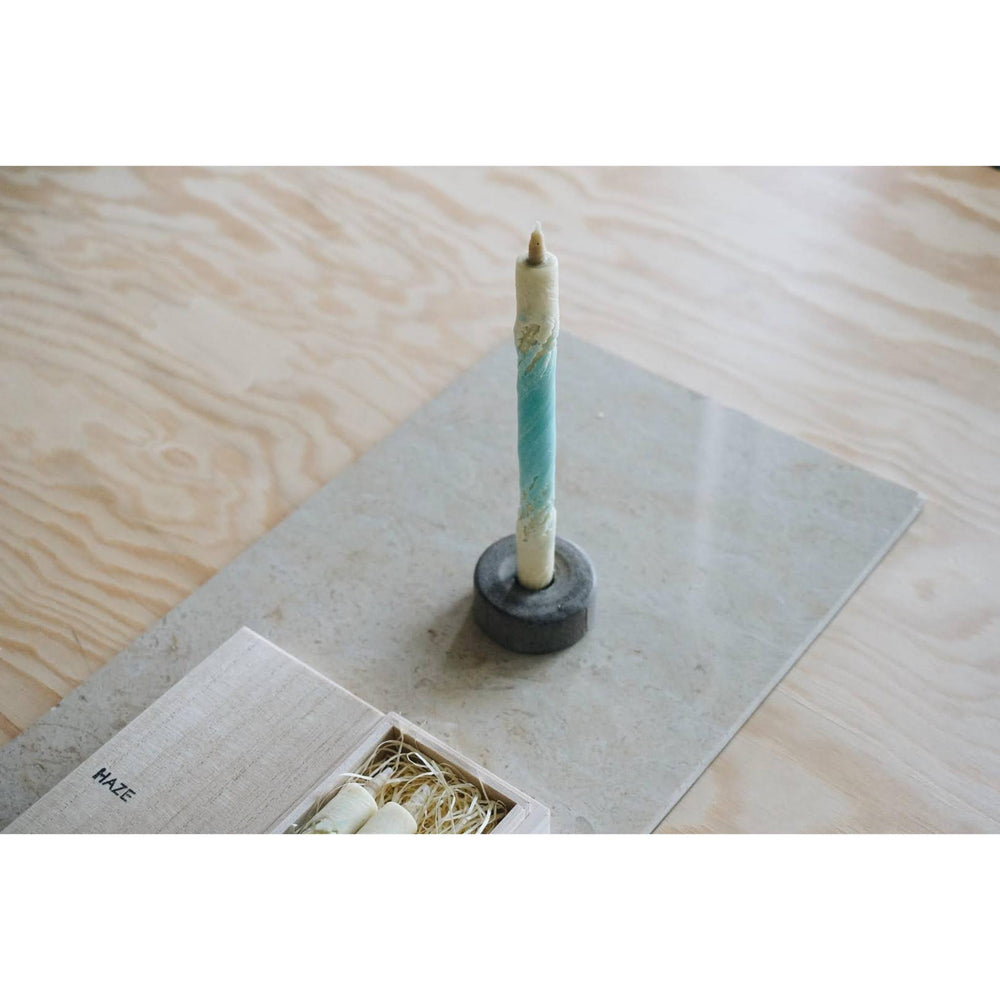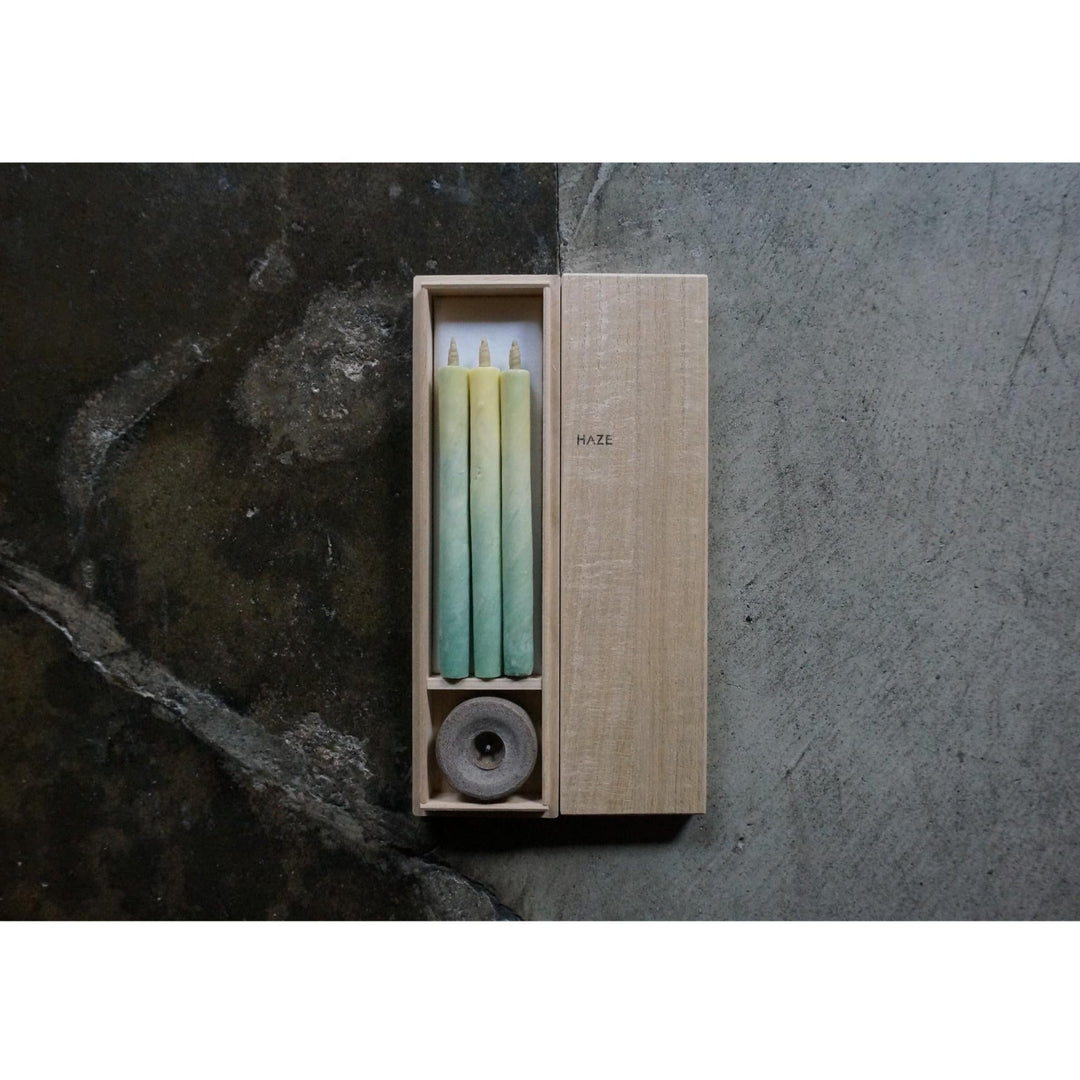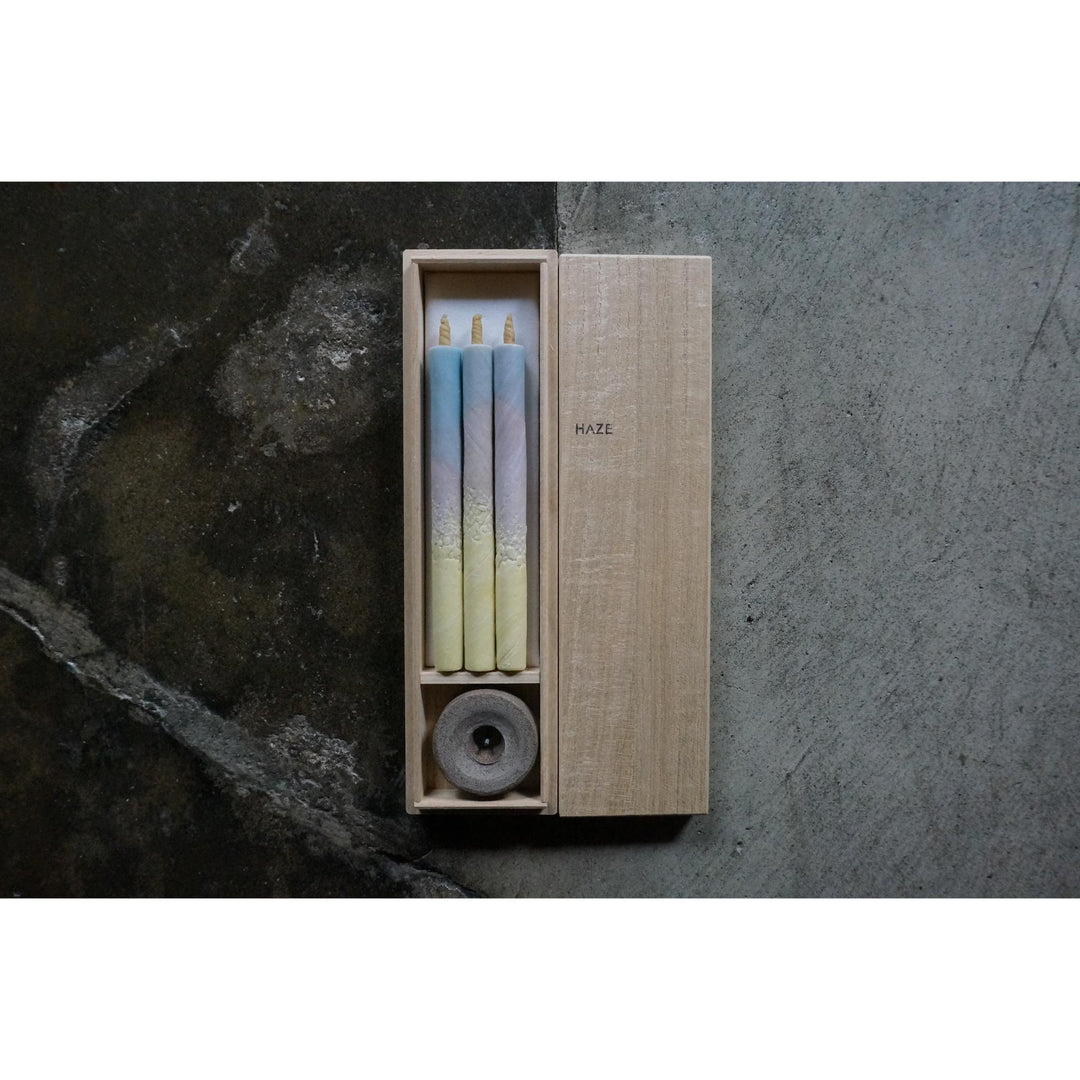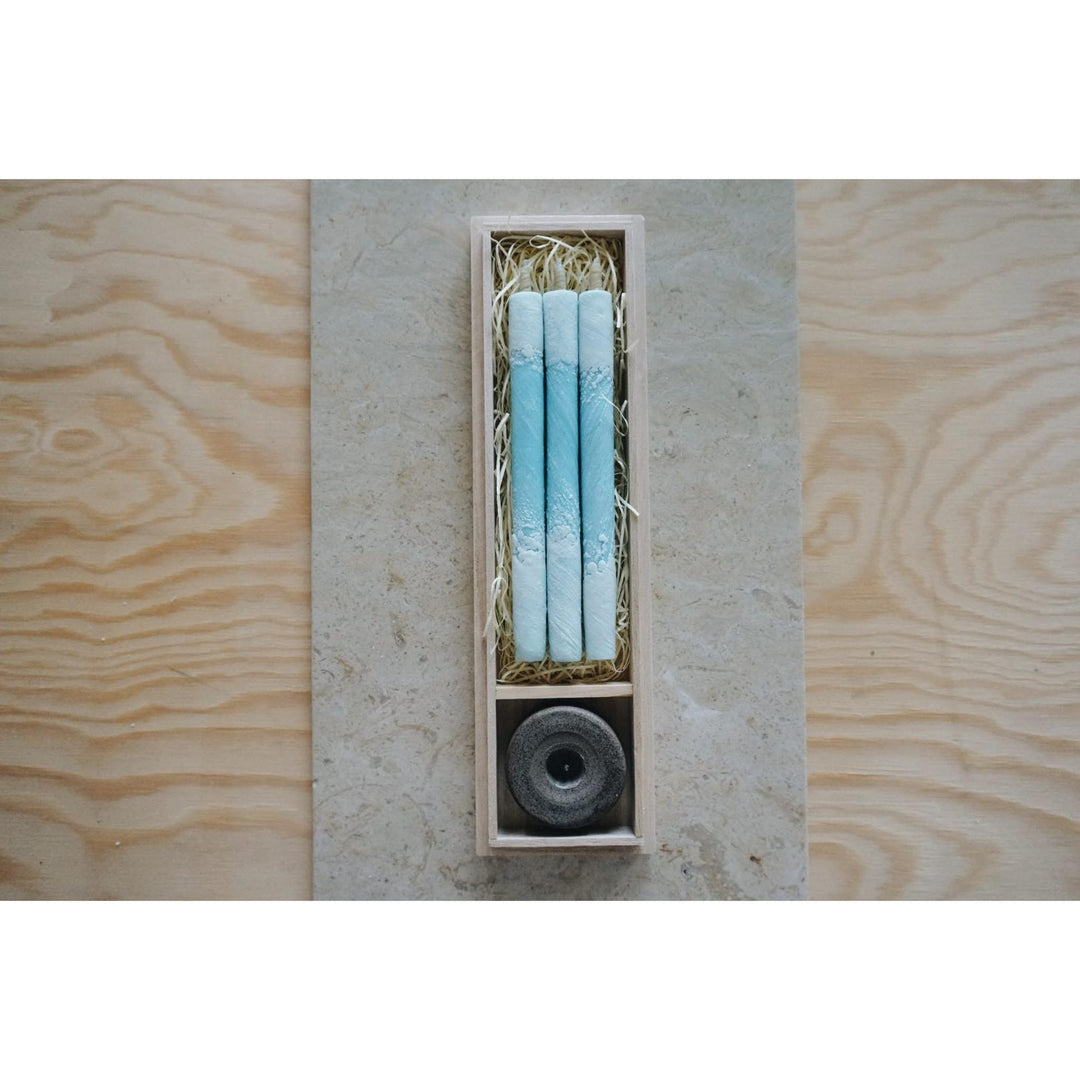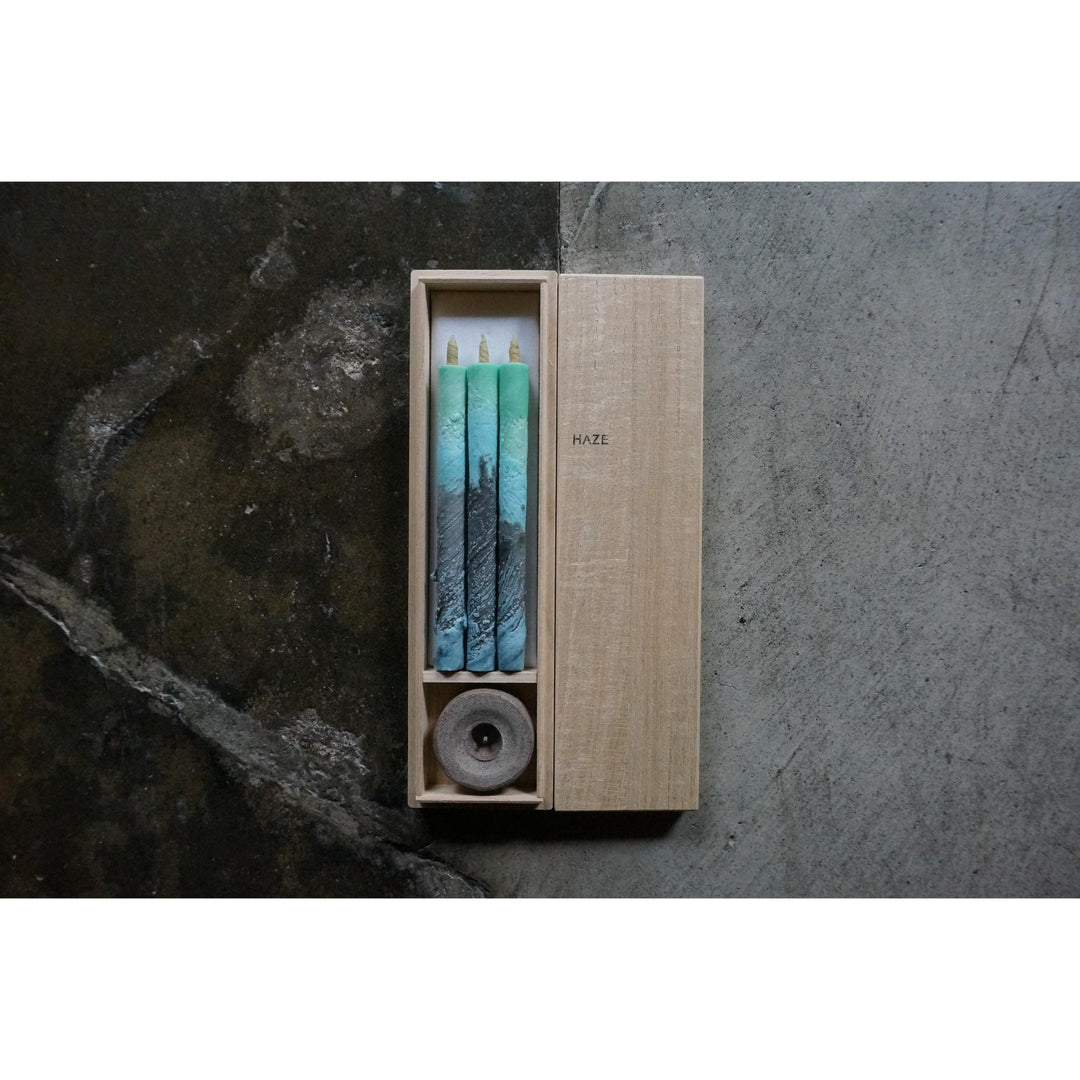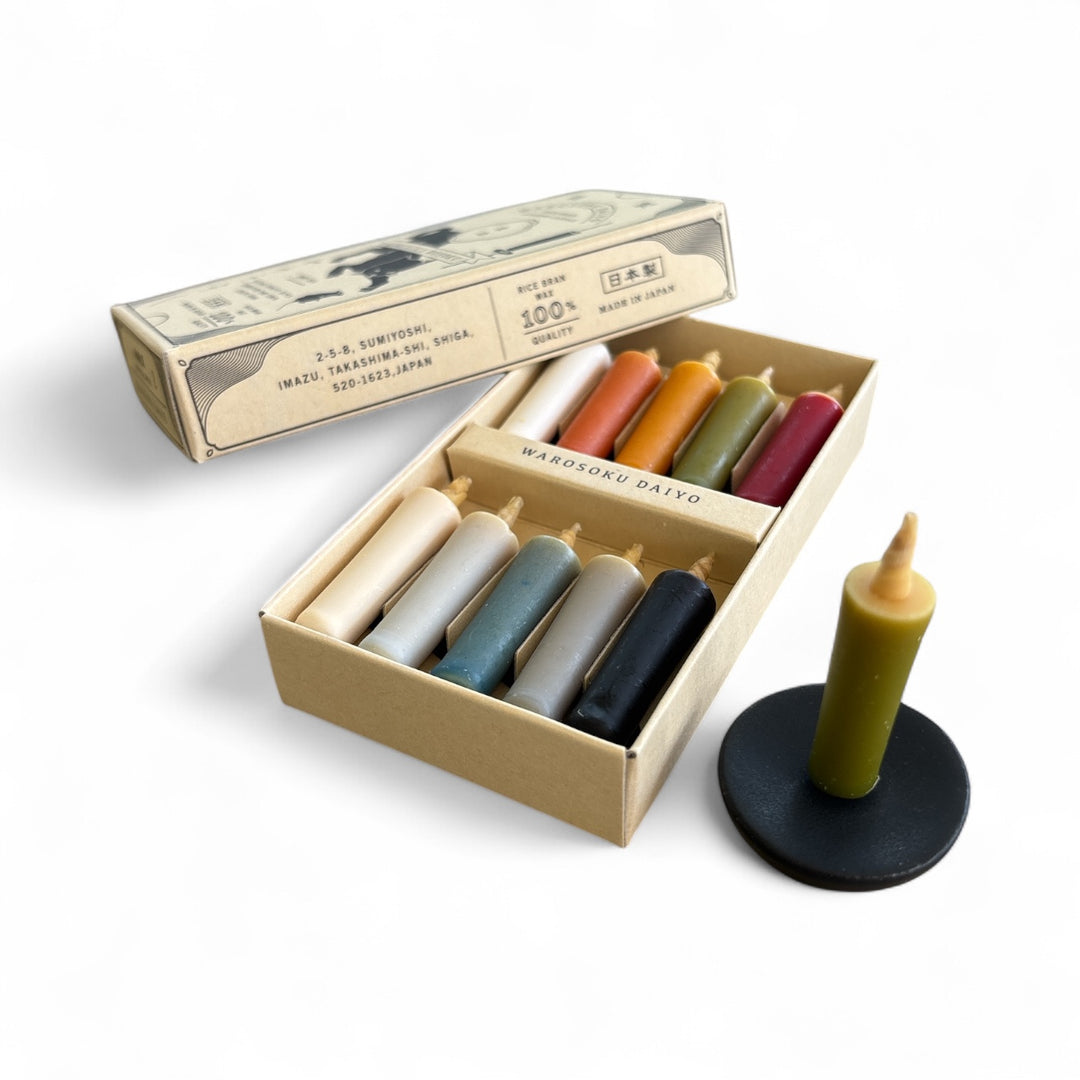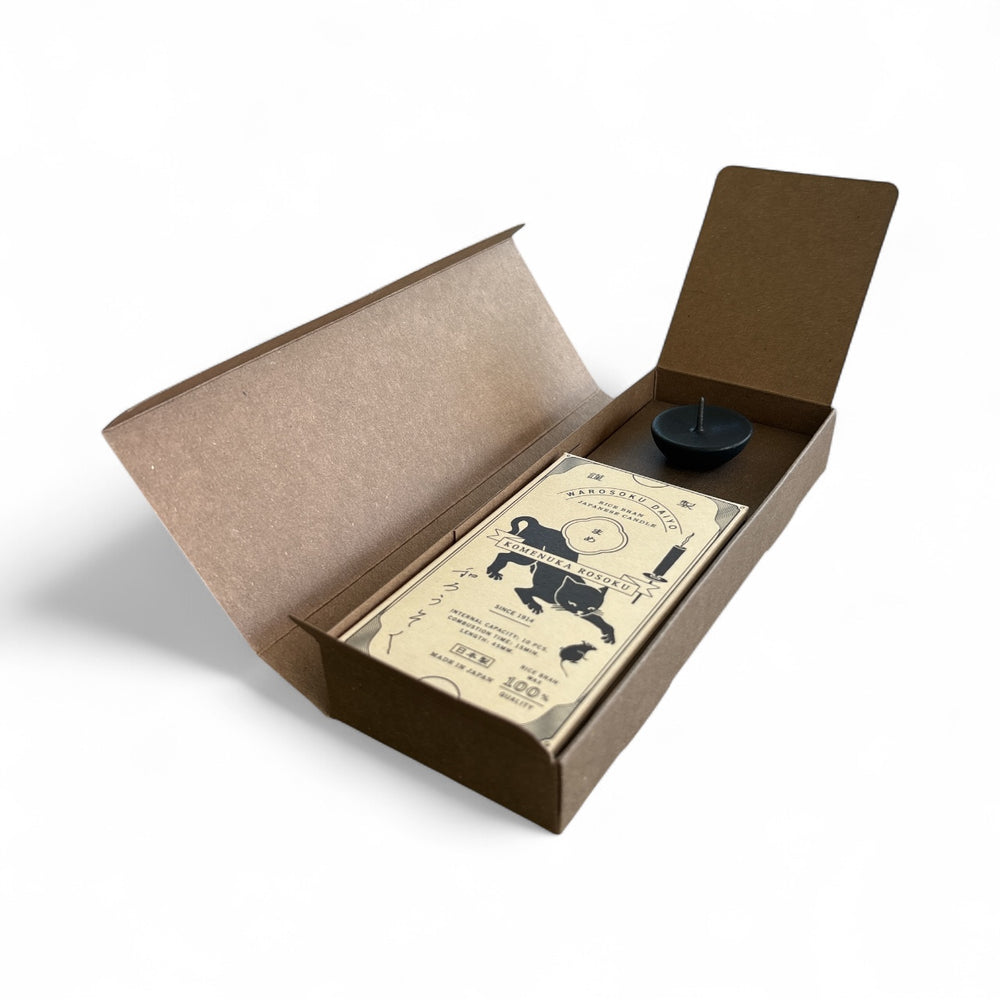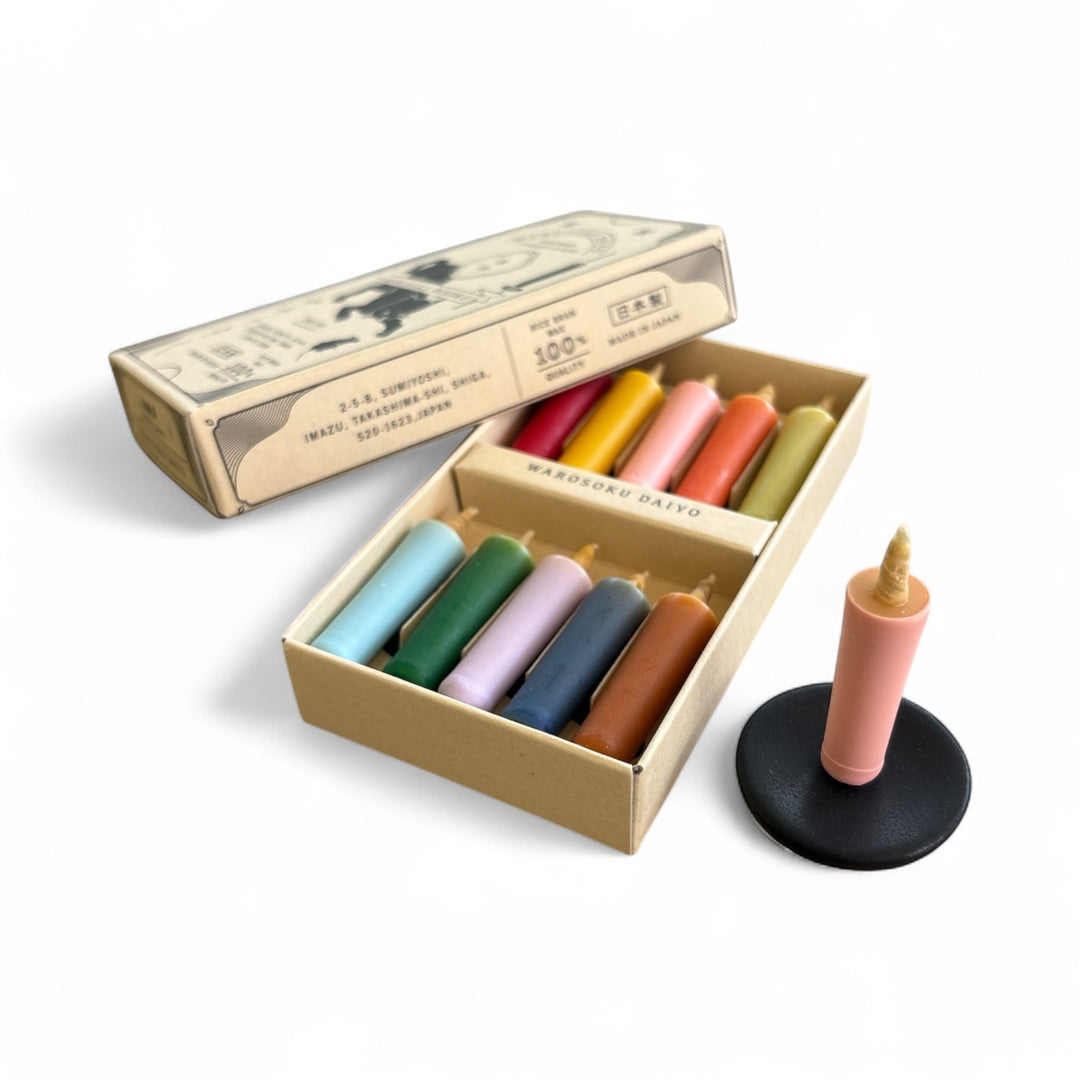HAZE – Founded in 2012, HAZE celebrates the fleeting beauty of candlelight, inspired by the transience of cherry blossoms. Its name combines “heat haze” and haze (wax tree in Japanese), expressing the poetic impermanence of things that eventually disappear. Handcrafted HAZE Warosoku Candles are made from sumac tree wax, with wicks of washi paper, Igusa grass, and cotton.
Warosoku Daiyo - Since 1914, Daiyo has been handcrafting traditional Warosoku candles in Japan, preserving techniques passed down for generations. Made from natural sumac or rice bran wax — a sustainable byproduct of rice production — and hand-rolled washi paper and silk wicks, these candles are entirely plant-based and environmentally friendly.
Using the traditional Tegake technique, with both HAZE and Daiyo candles, wax is layered by hand, creating a natural texture and a clean, plant-based burn. Warosoku produce a bright, steady flame, minimal soot, and burn away completely, leaving only a small char - perfect for creating a calm, mindful atmosphere.



